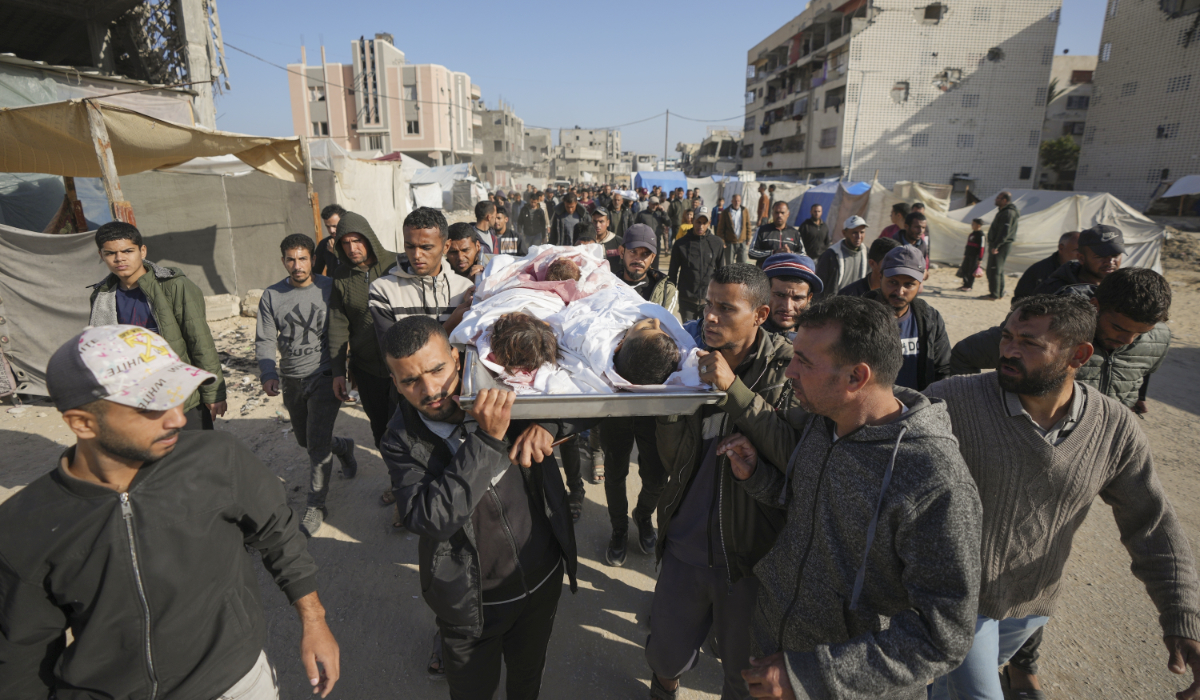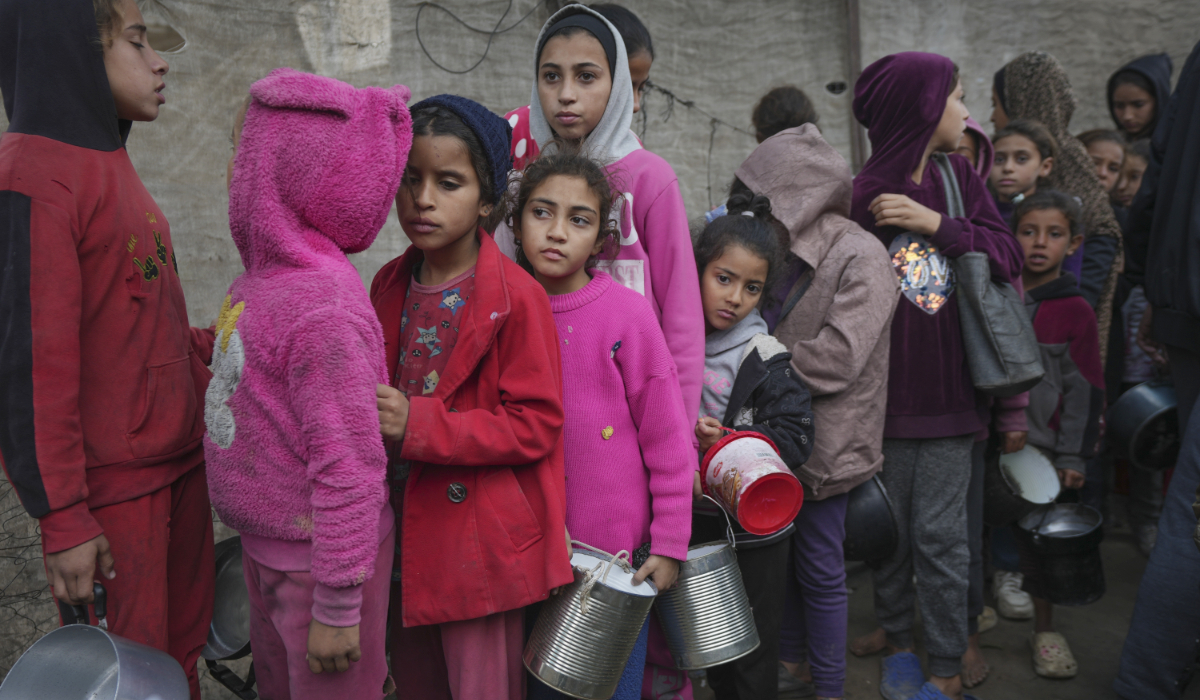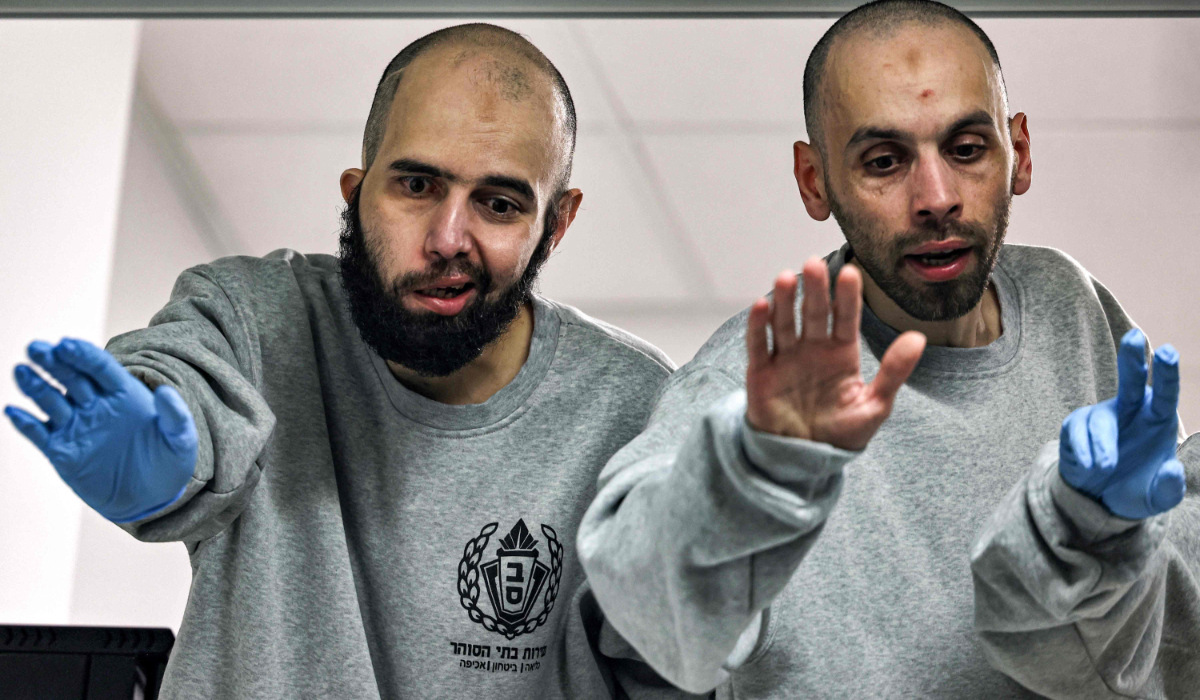NEW YORK CITY: The director of the main UN agency operating in Gaza painted a harrowing picture on Monday of the dire humanitarian situation there, which he said has become even more desperate following an Israeli strike two days ago on a crowded part of the town of Al-Mawasi.
The attack on Saturday killed at least 90 people and injured hundreds, turning the area, close to the Mediterranean coast, into a burnt wasteland littered with charred and mangled bodies.
Speaking in the nearby city of Khan Younis, Scott Anderson, the head of UN Relief and Works Agency in Gaza, said that following the air strike he visited the local Nasr Hospital, where staff were in chaos and despair, and “overstretched” amid shortages of medical supplies and equipment that continue to compromise their ability to effectively treat patients.
“I witnessed some of the most horrific scenes I’ve seen in the nine months that I’ve been here,” he added.
“The air was filled with the smell of blood and one health worker was mopping up pools of blood on the floor using only water because there aren’t sufficient disinfecting materials or other cleaning supplies to stop the spread of infection.
“There are not enough beds, hygiene supplies, sheeting, mattresses or scrubs, and many patients were treated on the ground or on waiting-room benches without disinfectant. It just puts even treatable injuries at risk of sepsis and much more significant complications.”
He continued: “Ventilator systems were not working due to electrical problems. And as I walked through the hospital and talked to families and children, we saw toddlers who are double amputees; children paralyzed and unable to receive treatment because they don’t have the equipment at the hospital in Khan Younis; and others who were separated from their parents.
“And we also saw mothers and fathers searching frantically within the hospital for their children, unsure if they were alive.”
Hundreds of thousands of Palestinians fled to Al-Mawasi, which is on the western outskirts of Khan Younis, after Israel declared it a safe zone and have been sheltering there.
The attack at the weekend is “just another reminder that nowhere is safe in Gaza and no one is safe in Gaza,” said Anderson.
Echoing comments by all other humanitarian workers since the start of the war, he underscored the need for a complete and permanent ceasefire and for “all parties to the conflict to protect civilians, wherever they are, but especially in UN schools and hospitals.”
Since the war began in October, more than 190 UNRWA facilities have been hit, many of them several times. Hundreds of thousands of people have been displaced by fighting and, highlighting their plight, Anderson said: “Nine out of 10 people in Gaza are displaced. Almost everyone has been forced to flee, over and over, and on average people in Gaza have had to move at least once a month.”
This massive, continuing displacements have not only disrupted lives but robbed families of what little stability and few possessions they had managed to retain, he added.
“The term ‘displacement’ sounds very sterile (and) I don’t think does justice to what people go through when they move,” he said.
“People are often only able to take whatever they can carry. They’re mostly on foot and some are only able to carry their children. Many have lost everything and they need everything.”
What is most frustrating, Anderson added, is that after nine months of war, what people require remains the same as what they needed when the war began.
“It’s very basic,” he said, including food, water, medicine and basic hygiene supplies. Women in particular are in urgent need of hygiene kits and sanitary products, “and we’ve been unable to meet that need over the course of the nine months.”
Five schools, including three UNRWA shelters, have been hit by military strikes in the past week alone, Anderson said, killing dozens of Palestinians and injuring scores. He lamented the obstacles that continue to prevent aid workers from delivering desperately needed humanitarian supplies “in the right quantity and the right quality.”
He added: “Several factors continue to stand in our way (including) restrictions on movement; the safety of humanitarian aid workers; not the right supplies are coming to Gaza; unpredictable working hours; telecommunication challenges; as well as fuel.”
Another factor affecting the free movement of aid is the “complete” breakdown of law and order, which only got worse when the Israeli military operation began in Rafah, Anderson said.
“The truck drivers that we use are being regularly threatened or assaulted,” he revealed. “Tires were shot out on their trucks on Friday. And they become less and less willing, understandably, to move assistance from the border crossings to our warehouses, and then on to people that are in need.
“We have had some challenges with people looting, which really isn’t a surprise. After nine months, people are hungry, people are angry, people are desperate and there aren’t any police to maintain social order.”
Anderson also highlighted the fact that nine months into the war, it is still the case that no international media have been granted access to Gaza, which he said is something that is “desperately needed.”
He added: “The only media, really, are people like myself or others talking to you. (In) most war zones, journalists and media workers perform a very vital function by informing the public about what is happening and they highlight the impact the wars have on innocent civilians.”
He urged Israeli authorities to allow reporters from international media organizations to enter the territory and added that “every effort must be made to protect journalists and media workers, wherever they are in Gaza.”
Anderson concluded by once again underscoring the urgent need for a ceasefire as a “respite for the people of Gaza, the release of hostages so they can return to their families, and a meaningful opportunity for healing to begin.”






























